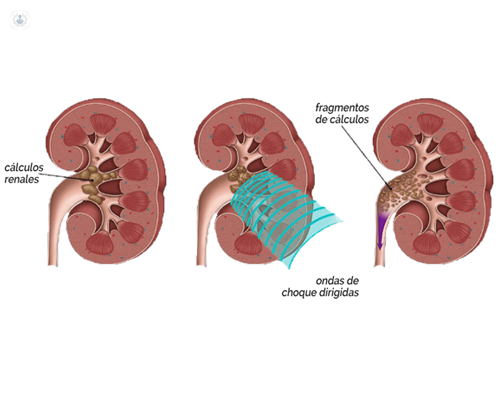Techniques available to address kidney stones
Written by:The kidney does sewage in the body. Urinary tract are the pipes through which the urine formed evacuated after clearing the blood. Sometimes sand, stones or small stones that can produce ureteral obstruction (pipe), increasing consequently the pressure in the upper urinary tract is formed and kidney. It is this pressure increase, which clog a pipe, generating pain radiating to the genitals and sometimes accompanied by nausea and vomiting.
Who can suffer kidney stones , and risk factors
Anyone can suffer kidney stones during their lifetime. However, dehydration, diet and genetics are the main risk factors.
How to diagnose kidney stones
Just to diagnose kidney stones specialist Urology will conduct a series of tests to discover the origin of symptoms. First you will be asked to patient medical history and perform a physical examination. Then it will be tested imaging and laboratory.
Additional tests that will hold the urologist to locate the stone and pain will be plain radiography, ultrasonography, intravenous urolografía and TAC.
Techniques to treat kidney stones
Once the kidney stone is located, we will inform the patient about the possibility of expelling spontaneously and, accordingly, the best treatment option is planned, which can be:
- Conservative treatment: pain killers and drugs to facilitate the expulsion of the stone, depending on the size of it are recommended.
- Shock wave lithotripsy (ESWL) is carried out with a machine capable of breaking the stones from outside the body. To achieve destroy the stone shockwaves routed to the calculation through the skin (short pulses with sound waves of high energy) is transmitted. Calculating absorbs energy of the shock waves and this is fragmented into pieces. That's when the fragments are passed in the urine in the days / weeks later.

- Ureteroscopy (URS) is performed with a small caliber endoscope. The patient receives during local or general anesthesia intervention. Once anesthetized the endoscope is introduced into the bladder through the urethra, without making any incision. The calculation is extracted with a special "basket" and / or fragmenting the calculation Holmium laser.

- Percutaneous nephrolithotomy (PNL) is the most aggressive option, which is reserved for patients with larger stones.



